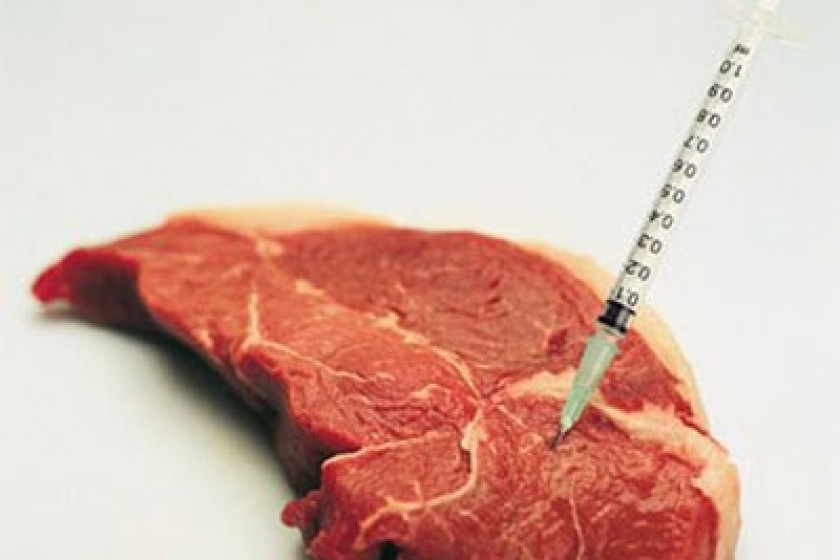
“Frankenstein Food” in Armenia?
15% of meat tested found to be genetically modified
Genetically modified foods (GFO’s), labeled by supporters and big business as a technological breakthrough in agricultural farming, has finally made its way to Armenia.
Despite the fact that scientific debate regarding the risks of GFO’s on the humans continues unabated, measures are already being taken to minimize the potential threat.
In European Union countries, the permissible amount of genetically modified organisms (GMO) in food products for adults has been set at .9%. The E.U. rules mean imported GM food has to be labeled and separated along the supply chain to safeguard against “contamination” of organic farms. Any produce containing more than 0.9% GM content must be labeled as such, a policy that can lead to shipments being sent back to the U.S. where labeling of GMF is not mandated. Food products aimed at children must contain no GMO
However, according to reports by Greenpeace, the companies Nestle, Unilever, Danon and Similac use GMO’s in their food products for children.
GMF production is a fast growing sector of the food market. Thus, scientific research leading to the creation of new GMO’s is also developing apace, even though the work involved is quite expensive.
Starting in July, 2010, a research laboratory belonging to the organization Standard Dialogue began to study the issue of GMO’s in Armenia. It is the only lab of its kind in the region.
Karen Darbinyan, who heads the lab, says that they are researching animal and plant derived food both imported and locally produced.
It is interesting and more than a bit surprising that Ministry of Agriculture’s Food Safety Inspectorate didn’t even know about the existence of the laboratory until quite recently.
When Hetq told Artur Varzhapetyan, who heads the Inspectorate, about the research lab, he said that, when and if necessary, the Inspectorate would bring food samples to the lab to confirm the existence of GMO’s.
Mr. Darbinyan told us, however, that to date the laboratory has received no such order from the government.
We also got a similar puzzling response from Gagik Manucharyan, Chief of the Agricultural Ministry’s Department of Crop Production, Forestry and Plant Protection.
Mr. Manucharyan confessed that he had no clue if seed and plant seedlings imported by Armenia were genetically modified or not. He added that the Ministry only requires that the brand label of the imported product make a note of this.
Mr. Varzhapetyan told us that laws overseas related to GMO’s were quite strict and that imported food product labels must include such information. He said that there was no such need for domestic foodstuffs since nothing is produced using GMO’s.
Karen Darbinyan offers conflicting data. He says that the lab found genetically modified products in a research study that was comprised of some 40% of consumer goods found on Armenian store shelves. These included both imported and locally grown products.
He says that some 15% of the meat products tested showed GMO’s and that a portion of the meat could be described as genetically modified.
For example, in a type of imported sausage, the lab found soy that contained the genes – Agrobacterium tumefacien commonly known as “crown gall”, one of the most famous plant diseases in the world. The DNA transmission capabilities of Agrobacterium have been extensively exploited in biotechnology as a means of inserting foreign genes into plants. Although generally seen as an infection in plants, Agrobacterium can be responsible for opportunistic infections in humans with weakened immune systems, but has not yet been shown to be a primary pathogen in otherwise healthy individuals.
When we asked if such results didn’t call for warning labels on various food products sold in Armenia, Mr. Darbinyan said that the jury was still out on the threats posed by GMO’s and that the data was still inconclusive.
He said that producers should be obliged to note the existence of GMO’s on package labels and that the use of GMO’s be prohibited in children’s food items.
On September 8, 2010, the RA Ministry of Health adopted Directive N16, which lists those food stuffs that must be inspected for GMO’s and their allowable limits.
Certain private firms rely on Standard Dialogue for such mandatory testing. Other firms merely go to the lab to get their produce voluntarily tested for quality.
Karen Darbinyan says that the cost for such testing at the lab has dropped from 42,000 to 22,500 AMD due to price reductions in the material and processes used. He says that overall costs should continue to drop.
P.S. In Armenia, preliminary legislation on GMO’s has already been drafted. The legislation seeks to regulate the importation and domestic sale of products containing GMO’s and monitor their possible effects on humans and the environment.
 Videos
Videos Photos
Photos




Write a comment